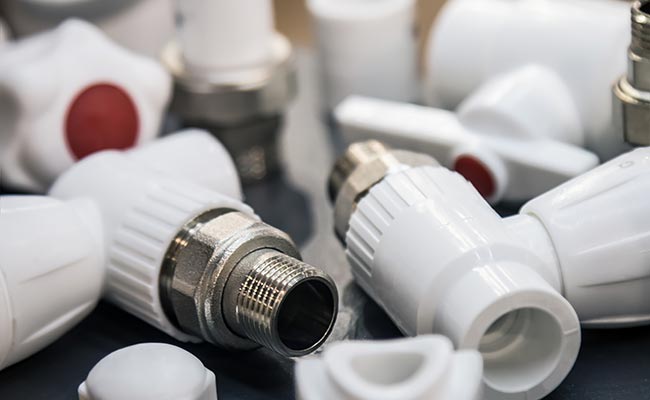You need to buy PVC valves for a project, but the catalog is overwhelming. Ball, check, butterfly, diaphragm—choosing the wrong one means a system that leaks, fails, or just doesn’t work right.
The main types of PVC valves are categorized by their function: ball valves for on/off control, check valves to prevent backflow, butterfly valves for throttling large pipes, and diaphragm valves for handling corrosive or sanitary fluids.
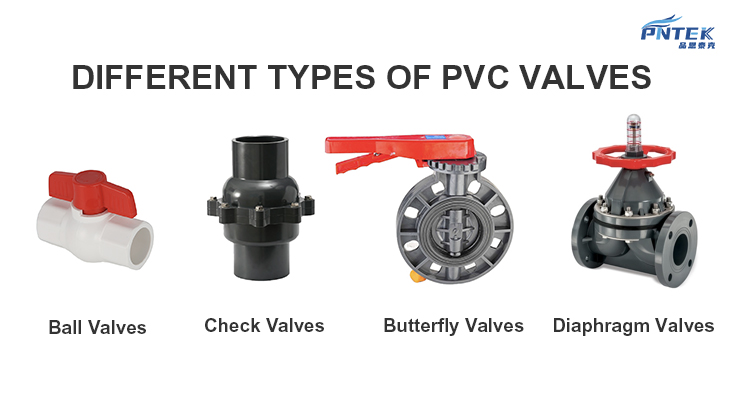
This is a question I discuss often with my partners, including Budi, a top purchasing manager in Indonesia. His customers, from contractors to retailers, need to know they’re getting the right tool for the job. A plumbing system is only as strong as its weakest component, and choosing the correct valve type is the first step toward building a reliable, long-lasting system. Understanding these differences isn’t just technical knowledge; it’s the foundation of a successful project.
Are there different types of PCV valves?
You hear the term “PVC valve” and might think it’s a single, standard product. This assumption can lead you to install a valve that can’t handle the pressure or perform the function you need.
Yes, there are many types of PVC valves, each with a unique internal mechanism designed for a specific task. The most common are for starting/stopping flow (ball valves) and automatically preventing reverse flow (check valves).
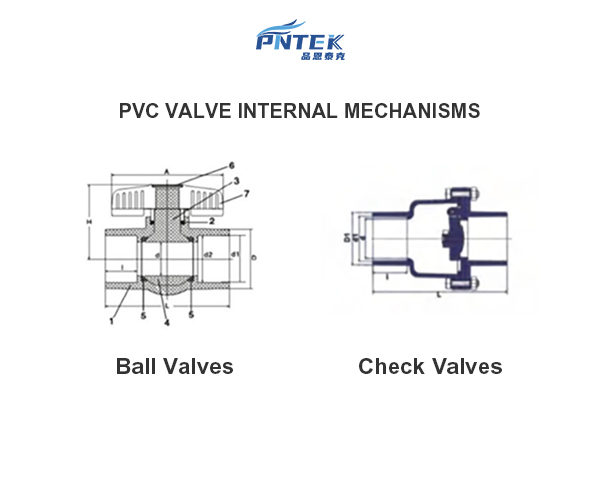
Thinking all PVC valves are the same is a common mistake. In reality, the “PVC” part just describes the material the valve is made from—durable, corrosion-resistant plastic. The “valve” part describes its job. To help Budi and his team guide their customers, we break them down by their primary function. This simple classification helps everyone select the right product with confidence.
Here’s a basic breakdown of the most common types you’ll encounter in water management:
| Valve Type | Primary Function | Common Use Case |
|---|---|---|
| Ball Valve | On/Off Control | Main water lines, isolating equipment, irrigation zones |
| Check Valve | Prevent Backflow | Pump outlets, preventing drain backflow, protecting meters |
| Butterfly Valve | Throttling/On/Off | Large diameter pipes (3″ and up), water treatment plants |
| Diaphragm Valve | Throttling/On/Off | Corrosive chemicals, sanitary applications, slurries |
What are the four types of PVC?
You see different labels like PVC-U and C-PVC and wonder if they matter. Using a standard valve in a hot water line because you didn’t know the difference can cause a catastrophic failure.
This question is about the plastic material, not the valve type. The four common PVC-family materials are PVC-U (standard, for cold water), C-PVC (for hot water), PVC-O (high-strength), and M-PVC (impact-modified).
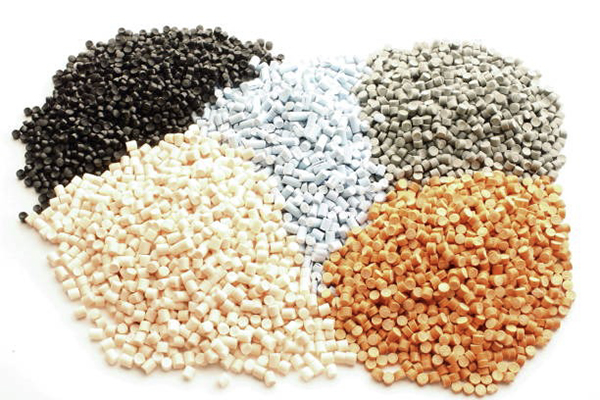
This is a fantastic question because it gets to the heart of product quality and application safety. confuse valve types with material types is easy. At Pntek, we believe an educated partner is a successful partner, so clarifying this is crucial. The material your valve is made from dictates its temperature limits, pressure rating, and chemical resistance.
PVC-U (Unplasticized Polyvinyl Chloride)
This is the most common type of PVC used for pipes, fittings, and valves in North America, Europe, and Asia. It’s rigid, cost-effective, and highly resistant to a wide range of chemicals. It’s the standard for cold water applications. Most of our Pntek ball valves and check valves that Budi orders are made from high-grade PVC-U.
C-PVC (Chlorinated Polyvinyl Chloride)
C-PVC goes through an extra chlorination process. This simple change dramatically increases its temperature resistance. While PVC-U should only be used up to 60°C (140°F), C-PVC can handle temperatures up to 93°C (200°F). You must use C-PVC valves for hot water lines.
Other Types
PVC-O (Oriented) and M-PVC (Modified) are less common for valves and more for specialized pressure pipes, but it’s good to know they exist. They are engineered for higher pressure ratings and better impact strength.
What are the six main types of valves?
You are building a complex system and need more than just a simple on/off valve. Seeing names like “Globe” or “Gate” can be confusing if you mostly work with PVC ball valves.
The six main functional families of valves are Ball, Gate, Globe, Check, Butterfly, and Diaphragm valves. Most are available in PVC to handle applications where metal valves would corrode or be too expensive.
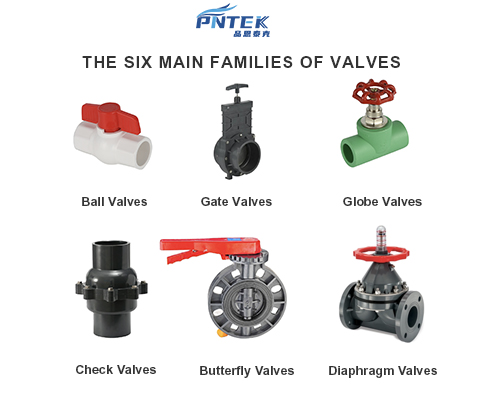
While we focus on the most common PVC types, understanding the entire valve family helps you know why certain valves are chosen over others. Some are industry standards, while others are for very specific jobs. This broader knowledge helps Budi’s team answer even the most detailed customer questions.
| Valve Family | How it Works | Common in PVC? |
|---|---|---|
| Ball Valve | A ball with a hole rotates to open/close flow. | Very Common. Perfect for on/off control. |
| Gate Valve | A flat gate slides up and down to block flow. | Less common. Often replaced by more reliable ball valves. |
| Globe Valve | A plug moves against a seat to regulate flow. | Niche. Used for precise throttling, less common for PVC. |
| Check Valve | Flow pushes it open; reverse flow closes it. | Very Common. Essential for preventing backflow. |
| Butterfly Valve | A disc rotates in the flow path. | Common for large pipes (3″+), good for throttling. |
| Diaphragm Valve | A flexible diaphragm is pushed down to close. | Common for industrial/chemical uses. |
For general water management, ball valves, check valves, and butterfly valves are the most important PVC types to know.
What are the different types of PVC check valves?
You need a check valve to prevent backflow, but you see options like “swing,” “ball,” and “spring.” Installing the wrong one can lead to failures, water hammer, or the valve not working at all.
The main types of PVC check valves are swing check, ball check, and spring check. Each uses a different passive mechanism to stop reverse flow and is suited for different pipe orientations and flow conditions.
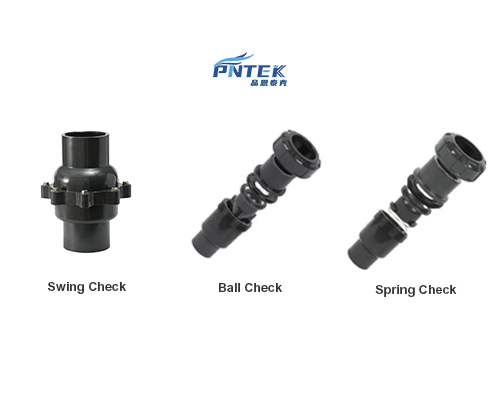
A check valve is your system’s silent guardian, working automatically without any handles or external power. But not all guardians work the same way. Choosing the right one is critical for pump protection and system integrity. This is a detail I always emphasize with Budi, as it directly impacts the long-term reliability of his customers’ installations.
PVC Swing Check Valve
This is the simplest type. It features a hinged flap (or disc) that swings open with the flow of water. When the flow stops or reverses, gravity and back-pressure swing the flap shut against its seat. They work best in horizontal pipes or in vertical pipes with an upward flow.
PVC Ball Check Valve
This is our specialty at Pntek. A spherical ball sits in a chamber. Forward flow pushes the ball out of the flow path. When flow reverses, it pushes the ball back into the seat, creating a tight seal. They are extremely reliable, can be installed vertically or horizontally, and have no hinges or springs to wear out.
PVC Spring Check Valve
This type uses a spring to help close the valve more quickly when flow stops. This rapid closing action is excellent for preventing water hammer—the damaging shockwave created by a sudden stop in flow. They can be installed in any orientation.
Conclusion
Choosing the right PVC valve means understanding its type—ball for control, check for backflow—and the plastic material itself. This knowledge ensures system reliability, prevents failures, and builds customer trust.
Post time: Aug-22-2025



